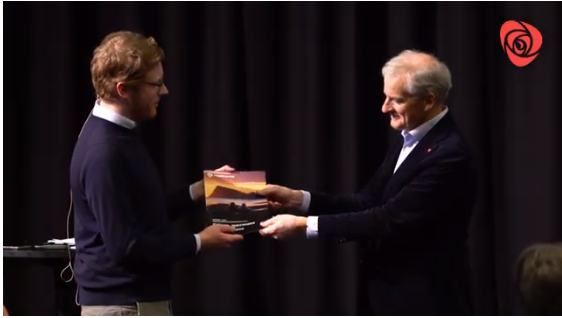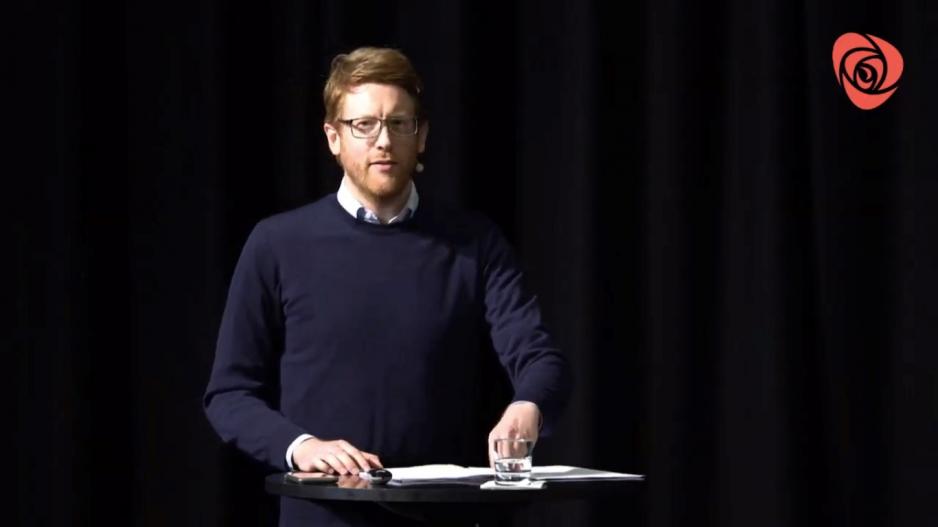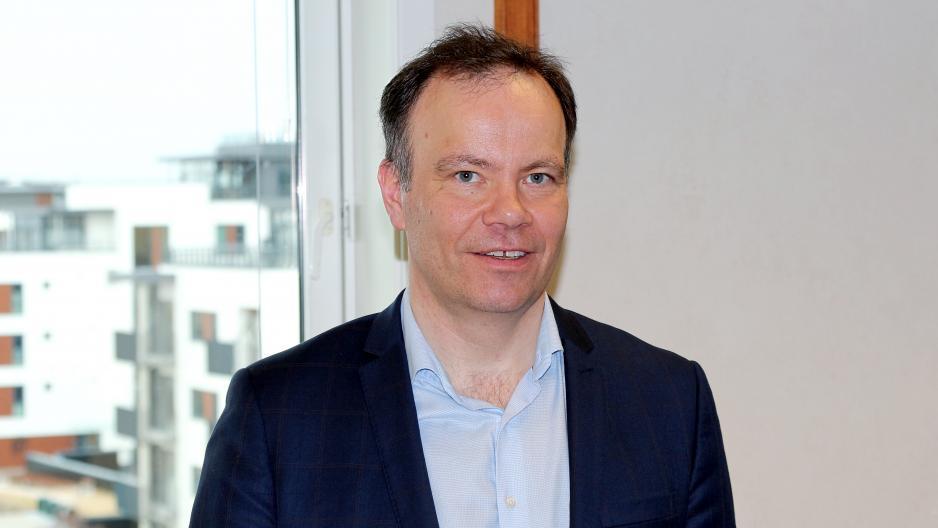Norwegian Labor Party Launches High North Strategy: “We Cannot Let the Authorities Abdicate in the High North”

Chair of the Labor Party’s High North Committee Martin Henriksen handing the party’s draft High North strategy to Party Chair Jonas Gahr Støre. (Photo: Screenshot)
Knowledge, creating new jobs based on own resources and solving the climate crisis. These are the key areas of High North politics for the next decade, according to the High North committee of the Norwegian Labor Party. “High North politics must move closer to people and mean something for their everyday life”, says committee chair Martin Henriksen.
The Norwegian Labor Party’s High North Committee submitted its report “Bigger, closer and greener” to party leader Jonas Gahr Støre on Tuesday. The report contains input for the party’s new High North policy-to-be. Committee Chair Martin Henriksen presented the main points of the report and started with the most important items first; negative population growth and decentralization.
“We have to build up, not build down. The High North is hit hard by centralization and those of us who live here are experiencing a crisis of faith in those who run the country. No one takes responsibility for local jobs, whomever you may ask. Thus, we as politicians must. The state should be close to people in the Arctic. Offices and organizations should contribute to building competence and use digitalization to provide people with opportunities where they live. We cannot let the authorities abdicate in the High North”, Henriksen says.

Chair of the Labor Party’s High North Committee, Martin Henriksen. (Photo: Screenshot)
The Committee also wants to strengthen Nord University and the University of Tromsø, as well as the Sami College.
In the Arctic, for the Arctic, from the Arctic
“We need more social science research in the High North. The Centre for Preparedness should be located in Bodø, and the Directorate of Fisheries should be split up and located in Northern Norway too”, Henriksen says.
Population figures in Northern Norway are dwindling at an alarming rate while there is growth in the rest of the country. The High North should become an attractive place in which to live and work through the creation of new jobs and systematic efforts in knowledge areas. And the matter is urgent.
“Knowledge in the north, for the north, from the north” is a part of the solution, according to Henriksen.
The world’s most sustainable region
The High North Committee also envisions the High North supplying climate solutions for both home and abroad.
“Climate politics can lead to new, green jobs. We must make the effort now!” says Henriksen.
The goal is nothing short of developing the High North into the world’s most sustainable region. That implies creating more jobs along the coastline, at sea and on land.
North Norway railway line
“Everyone talk about economic growth in the High North; however, value creation disappears without having been through local jobs. Our resources should create values where we live”, Henriksen says.
Last weekend, Norwegian media were writing about a potential North Norway railway line. The Committee is unanimous and clear; construction of a railway line is key for modernizing infrastructure.
“People and goods must make their way, from the coast to the markets.”
If no one lives here, that will have security policy implications.
Fiber in the Arctic
In addition, the Committee stresses development of a digital Arctic; a fiber cable through the Northeast Passage can tie the Arctic closer together.
“In that way we get closer to Asia and we should exploit the opportunity when the Northeast Passage opens up.”
The report also talks about green transport solutions, such as electric planes based on local production.
Development of Sami and Kven language, culture and community is also included in the report, as is a Svalbard initiative in green development.
The Arctic resource paradox
Nordland County Councilor Tomas Norvoll is one of the members of the committee submitting the report. One of his heart matters is the Arctic resource paradox:
“The High North is going really well. The economy is growing faster than the national average. The problem is that we don’t see this in our local communities, because all values are moved out [from the region]. And it annoys me that all we get is talk talk talk, year in and year out. If people no longer live here, that has security policy implications. We should start acting. There has been enough talk”, Norvoll says with passion.
He wants a plan for value creation in local communities in the form of a state investment fund as well as an industrial plan for the Norwegian and Barents Seas.
“We can find the answer to climate challenges in the High North. For instance through energy. The energy surplus in the High North is part of the answer to our challenges and should be returned to the local communities. We should have political management on clear conditions and based in the High North”, Norvoll says decidedly.
Living and working
To Aino Olaisen, Chairman of the board of the fish farming company Nova Sea and a fellow committee member, it is all about living and working in the High North; jobs and a vibrant community.
“We should have meeting places and relevant, de-centralized education opportunities. People should not have to move to get an education. And we should tailor-make profession education based on the needs of local communities”, Olaisen says.
She also stresses the senior high school dropout rate. Perhaps not everyone is ready to leave home at the age of 15.
Preparedness is also one of the themes of the report.
“We cannot have poorer preparedness in the High North. The place where you live should not define whether or not you will survive”, Olaisen says firmly.
Up for discussion
Labor Party leader Jonas Gahr Støre says he is well pleased with receiving such a thorough report.
“Not everything in this report can receive a green stamp. However, we have to start somewhere and there is plenty of input here. The Program Committee has reviewed the items [of the report]. And now we have do discuss this”, Støre says.
The High North Committee was established by the board of the Labor Party in December 2019.
This article was originally published in Norwegian and has been translated by HNN's Elisabeth Bergquist.


